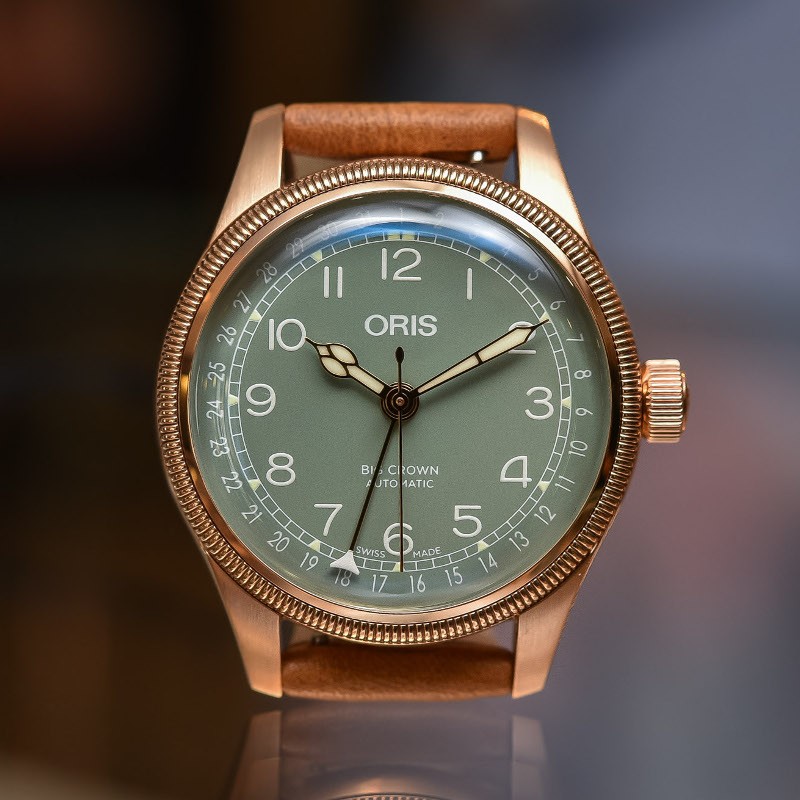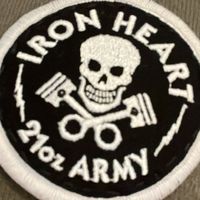The (Less intimidating) Watch Thread
-
You’re such an ISO
-
https://en.wikipedia.org/wiki/Diving_watch
While many watches can go diving, I think it's good that there is a standard for dive watches. You can throw a grandfather clock into the ocean but that doesn't make it a dive watch.
You can bounce on your dick but it doesn't make it a pogo stick.
Jeggings identify themselves as jeans. Iron Heart self identifies itself as jeans. That does not make them the same and equivalent.
It is unwise to devalue the meaning of words. I'm dealing with that in my workplace right now.
-
Watches also started using the term "water resistant" rather than "waterproof" years ago, in recognition of the fact that eventually, water will get in.
Which goes along with Doug's point about using proper terminology…
-
I've always taken it to mean that I could chuck a watch in a bowl of water, leave it for days, and it would likely not let water in.
Take it 200m under water, and pressure not simply 'water' (water x pressure = letting in water) will cause the damage.
Thankfully I don't do any sort of activity that requires that degree of water resistance, and as a rule I don't forget to take my watches off before I have a shower

My Hamilton, Seiko, and G Shock serve my needs just fine at the moment. I didn't check that with any regulatory bodies

-
The ISO standard is not just about water resistance. I don't recall the details but it includes a lumed second hand, so that you can be sure that the watch is not stoped while UW. It also needs a unidirectional rotating bezel. It's a whole series of things that made sense when watches were key diving instruments, which they aren't anymore.
Diving watch <> watch you can dive with
-
Copied from my previous Wikipedia link:
The standards and features for diver's watches are regulated by the International Organization for Standardization in the ISO 6425 standard; German Industrial Norm DIN 8306 is an equivalent standard. Besides water resistance standards to a minimum of 100 m depth rating ISO 6425 also provides minimum requirements for mechanical diver's watches (quartz and digital watches have slightly differing readability requirements) such as:[20]The presence of a unidirectional bezel with at least at every 5 minutes elapsed minute markings and a pre-select marker to mark a specific minute marking.
-
The presence of clearly distinguishable minute markings on the watch face.
-
Adequate readability/visibility at 25 cm (9.8 in) in total darkness.
-
The presence of an indication that the watch is running in total darkness. This is usually indicated by a running second hand with a luminous tip or tail.
-
Magnetic resistance. This is tested by 3 expositions to a direct current magnetic field of 4,800 A/m. The watch must keep its accuracy to ± 30 seconds/day as measured before the test despite the magnetic field.
- Shock resistance. This is tested by two shocks (one on the 9 o'clock side, and one to the crystal and perpendicular to the face). The shock is usually delivered by a hard plastic hammer mounted as a pendulum, so as to deliver a measured amount of energy, specifically, a 3 kg hammer with an impact velocity of 4.43 m/s. The change in rate allowed is ± 60 seconds/day.
- Chemical resistance. This is tested by immersion in a 30 g/l NaCl solution for 24 hours to test its rust resistance. This test water solution has a salinity comparable to normal seawater.
- Strap/band solidity. This is tested by applying a force of 200 N (45 lbf) to each spring bar (or attaching point) in opposite directions with no damage to the watch or attachment point.
- The presence of an End Of Life (EOL) indicator on battery powered watches.
- Testing diving watches for ISO 6425 compliance is voluntary and involves costs, so not every manufacturer present their watches for certification according to this standard.
- Strap/band solidity. This is tested by applying a force of 200 N (45 lbf) to each spring bar (or attaching point) in opposite directions with no damage to the watch or attachment point.
- Chemical resistance. This is tested by immersion in a 30 g/l NaCl solution for 24 hours to test its rust resistance. This test water solution has a salinity comparable to normal seawater.
- Shock resistance. This is tested by two shocks (one on the 9 o'clock side, and one to the crystal and perpendicular to the face). The shock is usually delivered by a hard plastic hammer mounted as a pendulum, so as to deliver a measured amount of energy, specifically, a 3 kg hammer with an impact velocity of 4.43 m/s. The change in rate allowed is ± 60 seconds/day.
-
-
I saw an Oris Big Crown in bronze yesterday. Didn't try it on, nor did I get a photo (here's one from Monochrome), but it's a really nice looking piece.

The case has more of a red-brown hue than other bronze watches, the photo captures it pretty well, and the green dial is lovely. It's an @Anesthetist (and Hodinkee) friendly 36 mm in diameter, so your other half will probably steal it.

Unfortunately they're around $1800, so not the cheapest option.
-
The case looks beautiful, but man, I hate cathedral hands. It also bugs me that the font for the dates doesn't match the font for the main numbers, especially since that font is much cooler.
-
Here's my unintimidating piece in its natural element.

-
Worth a look at for those folks that like field watches:
I've been saying for years that the SARG009 and SARG011 are great watches, and the prices on the secondary market are still going up. I've had the SARG011 for a couple years and it's more accurate than my COSC certified watches.




